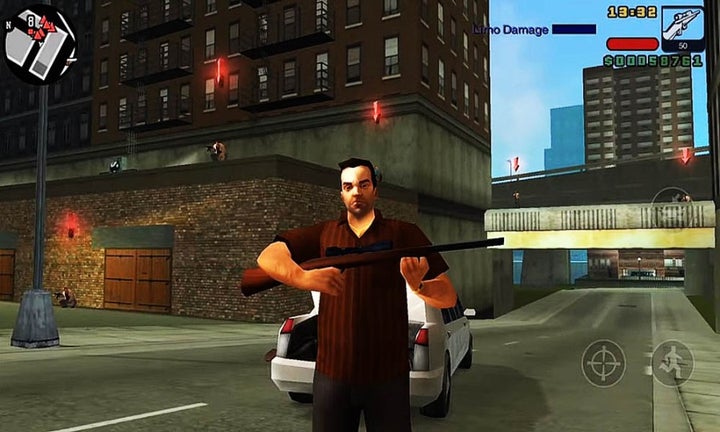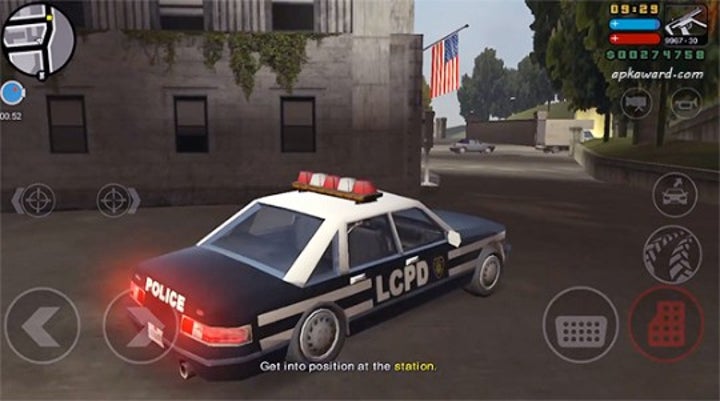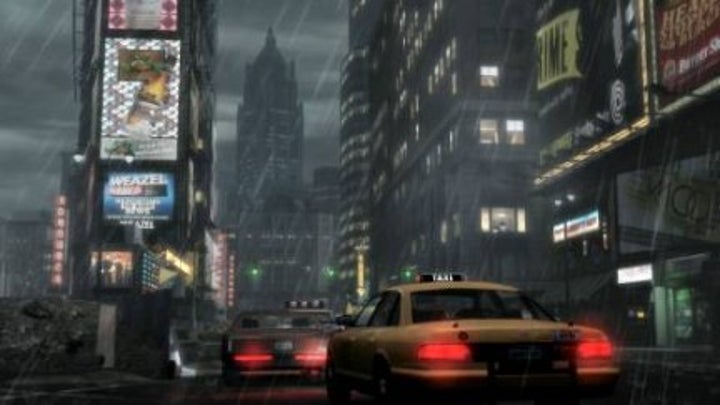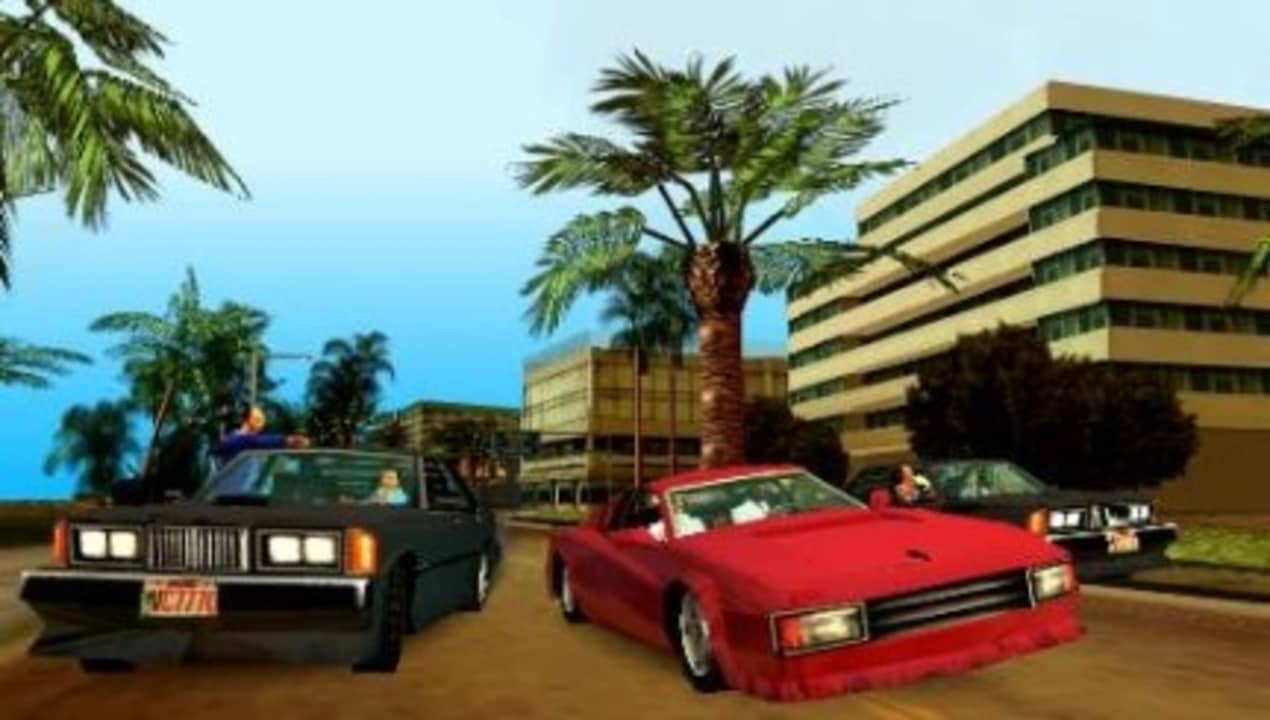In the vast and ever-evolving world of gaming, few franchises have made as significant a mark on the industry as the GTA series. With a masterful blend of intricate storytelling, immersive open-world environments, and pioneering gameplay mechanics, Rockstar Games has elevated this series to a pantheon of its own. Among the many remarkable titles in the franchise, two stand out as exemplars of Rockstar’s unwavering commitment to innovation: Grand Theft Auto: Vice City Stories and Grand Theft Auto: Liberty City Stories. Not only did these games break new ground in handheld console gaming, but they also stand as poignant testaments to the series’ enduring legacy.
In this article, we will embark on a captivating journey through the development of these two seminal titles, immersing ourselves in the complexities of their narratives, the brilliance of their open-world design, and the subtleties of their gameplay mechanics. As we explore the evocative soundtracks and audio design that brought Vice City and Liberty City to life, we will also delve into the social and cultural themes that define each era.
Ultimately, this article seeks to illuminate the profound impact that GTA Vice City Stories and Liberty City Stories have had on the gaming landscape. As remarkable chapters in the storied Grand Theft Auto saga, they have left an indelible mark on the hearts and minds of gamers around the world, forever changing the way we think about interactive entertainment.

Renowned narrative and poignant storytelling
The Grand Theft Auto franchise has long been revered for its captivating storylines and memorable characters, and Vice City Stories and Liberty City Stories are no exception. These games provide not only immersive experiences in their own right but also enrich the broader Grand Theft Auto universe by delving deeper into familiar settings and characters.
Vic Vance
Vice City Stories follows the journey of Victor “Vic” Vance, a former soldier who becomes embroiled in the Vice City criminal underworld. As Vic navigates the dangerous terrain of drug cartels, gangs, and corrupt officials, the game explores themes of loyalty, betrayal, and the pursuit of power. Serving as a prequel to the original Vice City, Vice City Stories adds depth to the overarching narrative by providing the backstory to pivotal characters and events.

Toni Cipriani
Meanwhile, Liberty City Stories focuses on the rise of ambitious mobster Antonio “Toni” Cipriani as he ascends the ranks of the Leone crime family. Set in Liberty City, the game’s narrative revolves around Toni’s pursuit of power and respect, as he contends with rival gangs, corrupt politicians, and internal conflicts within his organization. Like Vice City Stories, Liberty City Stories serves as a prequel to a previous game in the series, offering context for characters and events that shaped the Grand Theft Auto universe.
Both games feature well-crafted protagonists in Vic Vance and Toni Cipriani, each with their distinct personalities and motivations. As they navigate their respective journeys, the characters develop complex relationships with others in the game that test their loyalties and shape their destinies.

By exploring the narrative structures, characters, and storylines of Vice City Stories and Liberty City Stories, we gain a deeper appreciation for the intricate web of interconnected stories that define the Grand Theft Auto universe. These two games not only offer engaging standalone experiences but also serve as vital components of the series’ rich tapestry, showcasing Rockstar Games’ unparalleled storytelling prowess. The narratives of these games serve as poignant reminders of the franchise’s enduring legacy and its impact on the gaming landscape.
A tale of two cities
The open-world design of Vice City and Liberty City in their respective Stories titles is a testament to Rockstar Games’ ingenuity and skill in adapting their iconic cities for handheld consoles. Despite facing hardware limitations and reduced processing power, the developers succeeded in crafting immersive environments that retained the essence of their console counterparts.

Adapting a city for portability
Vice City Stories takes players back to the sun-soaked streets of 1980s Vice City, while Liberty City Stories returns them to the gritty, early-2000s metropolis inspired by New York City. To accommodate the limitations of the PSP, some compromises were made, such as reduced traffic density and fewer pedestrians. However, the developers compensated for this by maintaining a high level of detail in the cities’ architecture, street layouts, and landmarks, ensuring that the open-world experience remained authentic.
The PSP platform presented opportunities for unique gameplay experiences, allowing players to enjoy Vice City and Liberty City on-the-go. The missions were designed with shorter play sessions in mind, making them accessible and well-suited for portable gaming. Additionally, new features were introduced to enhance the gameplay experience, such as Empire Building in Vice City Stories and a wealth of side activities in Liberty City Stories.

Ambitious and revolutionary
The open-world design of Vice City Stories and Liberty City Stories highlights Rockstar Games’ remarkable ability to adapt their ambitious cityscapes for handheld consoles. The developers embraced the challenges and opportunities presented by the PSP platform, resulting in captivating open-world experiences that contributed significantly to the evolution of portable gaming. These games are an excellent example of how Rockstar Games consistently raises the bar for open-world game design, providing players with immersive experiences that they can enjoy anytime, anywhere.

Revitalizing the sound of Grand Theft Auto
The soundtracks and audio design of Vice City Stories and Liberty City Stories are integral to creating immersive environments that transport players to their respective time periods and settings. Both games boast carefully curated music selections and radio stations that reflect the musical landscape of their respective eras, while the sound effects and ambient noises create a believable and engaging world for players to explore.
The essence of the 80s
Vice City Stories captures the essence of the 1980s with a soundtrack that features a diverse range of licensed music from iconic artists. The radio stations reflect the vibrant and hedonistic atmosphere of 1980s Vice City, with each carefully chosen to evoke a specific mood or feeling. The original score by composer Lex Horton adds to the overall cinematic feel of the game.
The sound of the noughties
Liberty City Stories takes place in the early 2000s, and its soundtrack reflects the gritty and fast-paced nature of early-2000s Liberty City. The game’s radio stations showcase a diverse array of genres, with the selection of licensed music effectively mirroring the musical landscape of the time. The original score, composed by Stuart Hart and Sean Connelly, reinforces the game’s narrative themes and urban setting.
Scores and ambience that elevates gameplay
The audio design of both games extends beyond the music, with meticulously crafted sound effects and ambient noises that bring their respective cityscapes to life. The attention to detail in the audio design creates a believable and engaging world for players to explore.
The soundtracks and audio design of Vice City Stories and Liberty City Stories add depth and richness to the overall gaming experience, immersing players in their respective time periods and settings. By incorporating a diverse range of licensed music, original scores, and detailed sound effects, Rockstar Games has created unforgettable gaming experiences that continue to resonate with players years after their initial release.

Social commentary through gaming
Vice City Stories and Liberty City Stories, like other installments in the Grand Theft Auto series, use their open-world environments and narratives to explore and comment on various social and cultural themes. These games offer players an opportunity to engage with complex issues while navigating the criminal underworld, utilizing the interactive nature of video games as a powerful storytelling medium.
The dark side of the American Dream
Vice City Stories captures the spirit of excess, hedonism, and the darker side of the American Dream in the 1980s. The game explores the rise of drug cartels and the narcotics trade, highlighting the impact of U.S. foreign policy in Latin America. By weaving these social issues into its narrative, Vice City Stories offers a nuanced and immersive representation of the era.
Social transformation in the 2000s
Liberty City Stories transports players to the early 2000s, an era marked by rapid technological advancements, economic shifts, and cultural transformations. The game delves into themes such as organized crime, political corruption, and the influence of media on public opinion. Through its portrayal of these themes, Liberty City Stories provides a compelling snapshot of the era’s social and cultural landscape.
The games’ narratives and characters reflect and comment on real-world contexts, offering players a chance to consider the broader implications of their actions within the game world. By delving into the real-world contexts of their respective eras, Vice City Stories and Liberty City Stories demonstrate the Grand Theft Auto series’ commitment to presenting engaging and thought-provoking narratives.
GTA exposes the gritty reality of complex social structures
Vice City Stories and Liberty City Stories, like other installments in the Grand Theft Auto series, use their open-world environments and narratives to explore and comment on various social and cultural themes. These games offer players a unique opportunity to engage with the social and cultural complexities of their respective eras, enriching the gaming experience and solidifying the series’ status as a groundbreaking and influential force in the world of video games.

The heritage and legacy of the GTA Stories phenomenon
The Grand Theft Auto series has been at the forefront of gaming innovation since its inception, and Vice City Stories and Liberty City Stories are no exception. These games pay tribute to their predecessors while simultaneously contributing to the series’ evolution, leaving an indelible mark on the franchise’s storied history.
Rockstar Games masterfully incorporated elements from previous games in the series into Liberty City Stories and Vice City Stories, blending the familiar with the new to create immersive and engaging experiences. The developers also refined the open-world design and mission structure, resulting in more cohesive gameplay and world-building.
By introducing new storylines, characters, and themes, Liberty City Stories and Vice City Stories added new dimensions to the Grand Theft Auto universe, enriching the overall narrative and gameplay experience. These games also laid the foundation for the ambitious worlds of Grand Theft Auto IV and V, demonstrating Rockstar Games’ commitment to pushing the boundaries of what a video game could achieve.
Ultimately, Liberty City Stories and Vice City Stories stand as both products of their time and harbingers of the future, forging their own unique paths while paving the way for the HD universe that followed. These games remain a testament to the Grand Theft Auto series’ groundbreaking legacy, inspiring gamers around the world to engage with immersive storytelling, complex characters, and intricate open-world design.

The success of GTA 6 relies on the lessons learnt and taught by the GTA Stories duology
As the Grand Theft Auto series continues to evolve and push the boundaries of storytelling, world-building, and gameplay mechanics, Liberty City Stories and Vice City Stories stand as treasured precursors and potential inspirations for future installments. The power of revisiting familiar settings and characters from a fresh perspective is evident in these games, as they offer players a deeper understanding of the intricate relationships and motives that shape the criminal underworld. This narrative approach could serve as a blueprint for Grand Theft Auto 6, allowing developers to explore new dimensions of beloved locales and characters from previous games, weaving together an ever more complex and interconnected web of stories.
Accessibility and adaptability
The handheld console origins of Liberty City Stories and Vice City Stories remind us of the importance of accessibility and adaptability in the gaming experience. These games serve as an example of how lessons learned from previous titles can inspire developers to continue refining and adapting their open-world design, ensuring that future titles remain engaging and accessible to a wide range of players.
Further exploration of cultural themes
Moreover, the bold exploration of social and cultural themes in both Stories games provides a guiding light for the narrative direction of Grand Theft Auto 6. The challenge to delve deeper into the complexities of contemporary society by addressing topical issues and offering nuanced commentary on the world around us is an opportunity for future titles in the series to use the interactive nature of video games as a powerful storytelling medium that resonates with players on both an emotional and intellectual level.
The GTA legacy must live on in future endeavors
The legacy of Liberty City Stories and Vice City Stories is a poignant acknowledgment of the series’ rich history and an inspiration for the development of Grand Theft Auto 6 and further titles. By building on the strengths of these games and embracing the innovations they introduced, Rockstar Games can continue to redefine the boundaries of the open-world genre, crafting captivating experiences that will inspire and delight generations of gamers to come.

The yet unseen legacy of the GTA Stories duology
Amidst the ever-evolving landscape of the Grand Theft Auto series, Liberty City Stories and Vice City Stories hold a unique position as both trailblazers and inspirations for future installments. These games served as catalysts for the series’ evolution, pushing the boundaries of storytelling, world-building, and open-world design to create unforgettable gaming experiences.
The legacy of these games continues to resonate in the present day, inspiring developers to innovate and challenge themselves in ways that captivate and inspire players around the world. As we reflect on the profound impact of Liberty City Stories and Vice City Stories, we are reminded of the series’ enduring legacy and the potential for future installments to build upon the foundation laid by these remarkable games.


